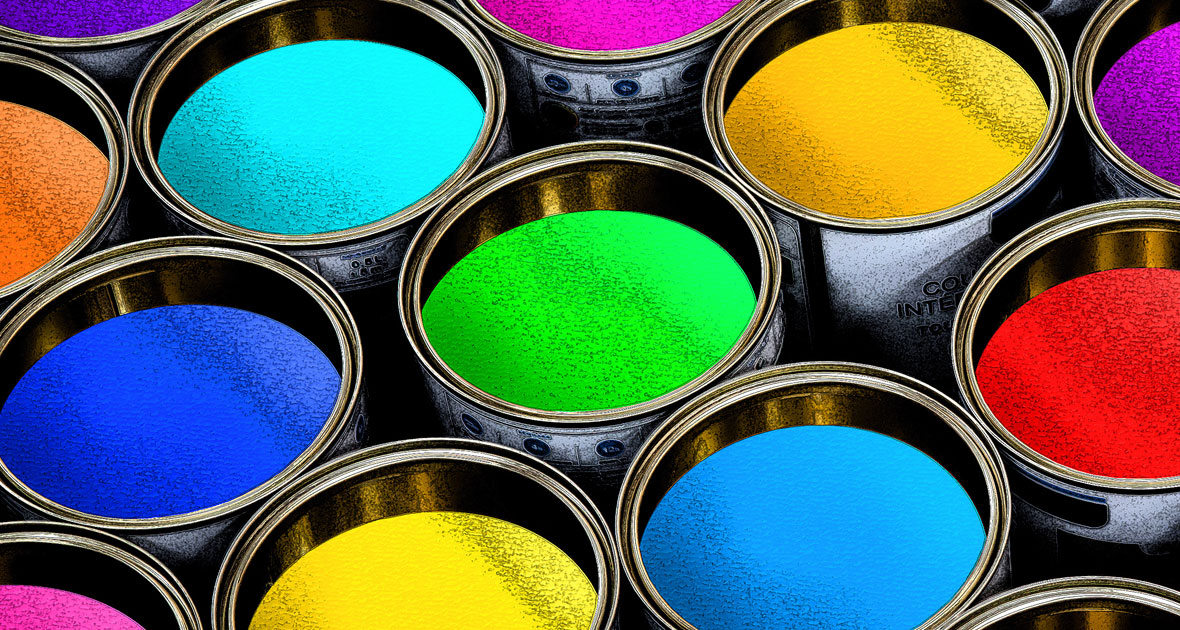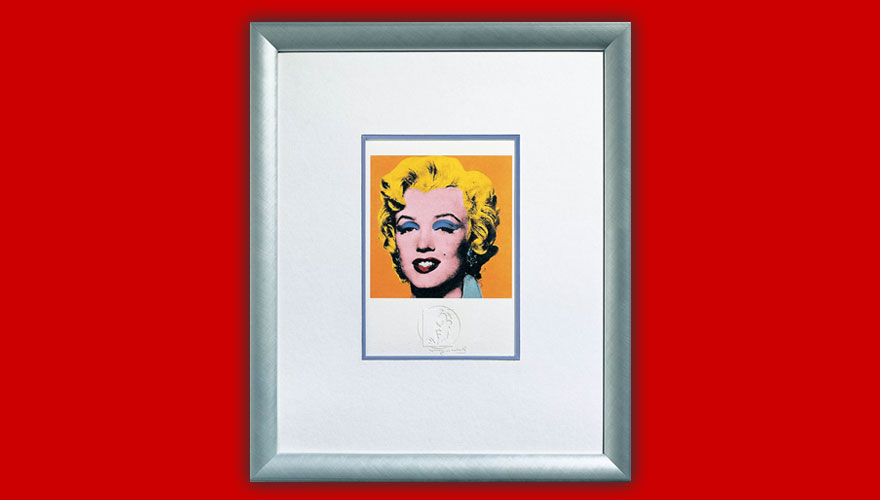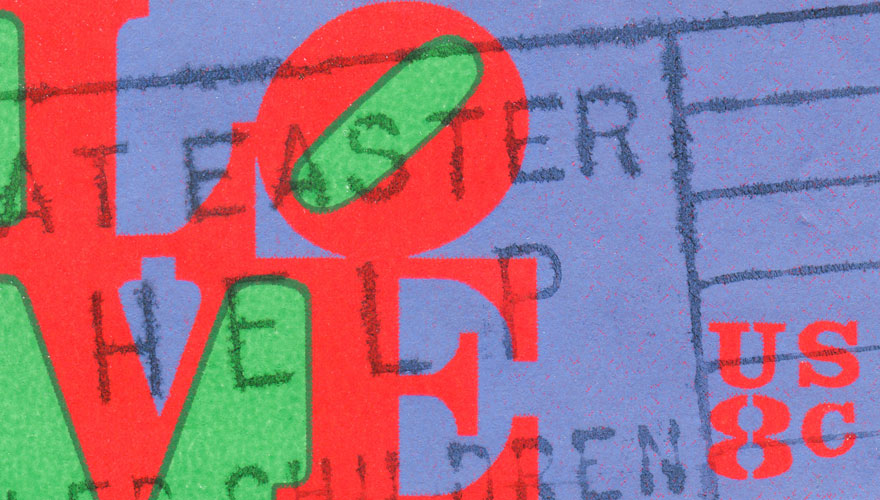
Pop Art: When Everyday Culture Turned Into Art
Colourful, bold and without respect for the art establishment: from the late 1950s onwards, Pop Art turned the art world upside down. Its artists questioned almost all parameters of visual art - from motifs and themes to style and aesthetics as well as the role and function of art within society. They sought their motifs and inspiration predominantly in the objects of everyday life, such as media content, advertising, comics, or consumer goods. Pop Art gave rise to numerous famous works, such as Robert Indiana's LOVE sculpture, Roy Lichtenstein's comic book homages, Andy Warhol's screenprints of Marilyn Monroe, and his legendary "Campbell's Soup Can".
The groundbreaking style of Pop Art also extended to many areas beyond art and evolved into a kind of new universal language for design. Influences of Pop Art could be found in fashion, graphic design, illustration, and many other aspects of popular culture in the 1960s. By the early 1970s, its heyday was over, but its spirit continued to have a lasting impact. For many artists, this epoch with its innovative aesthetics remained a major source of inspiration for decades to come. The traces of Pop Art can still be seen in contemporary art, for example, in the works of Keith Haring, Jean-Michel Basquiat, Niki de Saint-Phalle, James Rizzi, Jeff Koons, or Mr. Brainwash.

Origin in the UK, Breakthrough in the USA
Pop Art and its artists are often seen as an American phenomenon, but its roots lie in the United Kingdom in the early 1950s. At that time, a group of artists called the "Independent Group" came together at the London "Institute of Contemporary Arts". This group critically engaged with the consequences of economic prosperity in many countries around the world. It united artists from various disciplines, including painters, sculptors, architects, and curators, among them Lawrence Alloway, Richard Hamilton, and Eduardo Paolozzi.
The group's goal was not only to create and exhibit art collectively but also to analyse the developments in society, such as the increasing consumption and omnipresence of advertising, on a theoretical level. It was within this environment that the first artworks, now considered precursors to the Pop Art movement, were created, such as collages by Paolozzi and Hamilton.
Somewhat later than the London artists, artists in the USA also began to seek new forms of expression, themes, and concepts. From the late 1950s onwards, they started incorporating prominent motifs from the economy, media, and society into their works. Robert Rauschenberg and Jasper Johns were among the first to gain recognition with some of the later typical elements of Pop Art, both having exhibitions in New York by the late 1950s. In 1958, gallery owner Leo Castelli showcased Rauschenberg, and later that year, he also exhibited Johns. Soon after, many other American Pop Art artists joined the movement, such as Robert Indiana, Andy Warhol, Mel Ramos, Tom Wesselmann, Claes Oldenburg, Roy Lichtenstein, and James Rosenquist, who are now considered icons of that epoch.
Pop Art Pioneers a Completely New Course in Art
Given the changes in the economy and society, both British and American Pop Art artists developed a fundamentally new concept of visual art. Based on the observation that commercialisation, advertising, mass production and mass media were increasingly dominating people's lives, they wanted to address, question, and in a way, instrumentalise these developments in their works.
The idea was to bring art closer to everyday life and people's experiences in two ways: Firstly, the inspiration for the artworks came from ubiquitous themes, products, and individuals. Secondly, art should regain greater significance for the masses of people.

Pop Art Motifs: The Triviality of Everyday Life in the Spotlight
Pop Art artists aimed to question the consumer society and its mechanisms. To do so, they primarily incorporated motifs in their works that symbolised contemporary events and had widespread recognition. These included numerous everyday products, content from mass media, as well as certain design principles and behavioural patterns of mass culture. By placing ordinary everyday objects at the centre of their artworks, Pop Art initiated a paradigm shift in the visual arts. Seemingly mundane items such as soup cans, cars, cigarette packs, bread, Coca-Cola bottles, or furniture suddenly became prominent.
The mass media, especially print media, became the second major source of Pop Art motifs. Brand logos, advertisements, and excerpts from newspapers and magazines found new contextual meanings, particularly in collages. Photos of well-known personalities such as John F. Kennedy, Janis Joplin, Elvis Presley, and Marilyn Monroe were also reproduced in the artworks. In addition, many Pop Art artists also worked with references and homages to comic figures and strips such as Donald Duck, Popeye, or Mickey Mouse. However, Pop Art also drew from traditional genres such as portraits or still lifes but interpreted them on an areawide basis and in a highly stylised manner, fundamentally reinventing them.
Out of the Museums - Into Everyday Life: The "Democratisation" of Art
The motivation of Pop Art creators to seek their motifs in people's everyday lives was based on the belief that artworks should become more relatable and less intellectual and elitist. People should be able to recognise themselves and their environment in art, facilitating easier access to a cultural domain that was usually confined to galleries and museums. The underlying idea was that the long-standing tradition of distinguishing between popular culture and high culture in artworks needed to be abandoned. Pop Art artists considered this system to be completely outdated. They aimed to directly engage with people's lives through their works.
An important part of this strategy was to make artworks affordable for larger audiences. Through serial production, especially using printmaking techniques, art was intended to become as commonplace as any other consumer product. In the process, the principles of originality and uniqueness, which had long been regarded as the sole distinguishing features of artworks, were sacrificed. Pop Art broke several taboos and questioned the entire art establishment with all its rules and mechanisms.

The Pop Art Characteristics: Style and Techniques
In addition to its new self-image and motifs, Pop Art's great achievement lay in its innovative aesthetics. It broke many principles of contemporary styles and set new standards.
One significant aspect of Pop Art pictures was the return to representational motifs that had been largely banished in the highly popular Abstract Expressionism movement. However, the pictorial objects were usually not shown realistically, but rather stylised, reducing them to their essential features and contours.
Vibrant and bold colours, particularly the primary colours red, blue, and yellow, were used in large areas for colouring. Other characteristics of Pop Art included the lack of depth and the use of larger and smaller dots, reminiscent of printing techniques. Thus, the imagery of Pop Art intentionally evoked the illustrations of comics and cartoons.
In addition to the cooler and abstract style, Pop Art artists increasingly worked with quotations and distortions. They took motifs out of their original contexts and presented them in isolation or new, unfamiliar connections. Furthermore, they often manipulated their objects of art and altered their meaning through artistic treatment.
The techniques used in Pop Art also brought about some changes. While painting, drawing, and sculpture remained common, Pop Art introduced new or less common techniques such as photomontage, collage, assemblage, or various printmaking techniques. These methods supported the aesthetics of Pop Art or even partly defined them. Especially screen printing became a symbol of Pop Art's serial production.
The Two Sides of Commercialisation in Pop Art
With their stance on commercialisation, some Pop Art artists found themselves in an intellectual balancing act. On the one hand, they criticised the immense significance of consumption and its consequences. On the other hand, they also propagated mechanisms that aimed at serial production and mass dissemination of their works. Particularly, the use of screen printing to produce large series of identical artworks contributed to commercialisation.
Andy Warhol, in particular, made no secret of the fact that economic success was a significant part of his artistic practice. This position went against the long-held belief that art should primarily serve a higher, noble purpose and remain independent of economic constraints. The pragmatic and realistic attitude of many Pop Art artists drew considerable criticism and sparked a debate on the commercialisation of art that continues to this day.
